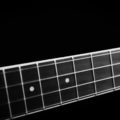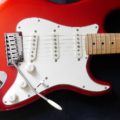Guitars come in various shapes, sizes, styles, and designs, including traditional acoustic guitars Ibanez Acoustic Guitars - Ibanez acoustic guitars are among the leading guitar brands in the market. These guitars are incredibly versatile and cater to a wide range of music genres. With so many guitar brands available, it can be challenging to choose just one. However, the Ibanez guitar stands out for its robust qualities and exceptional sound. About Ibanez… , semi-acoustic guitars, electric guitars, hollow body guitars, jumbo guitars, and ‘S’ hole guitars. Each type has its own unique appearance, sound, and tonality, attracting different groups of enthusiasts. Broadly, guitars can be divided into two main categories: acoustic guitars and electric guitars.
To understand how guitars work, let’s first examine the common components found in any guitar. Every guitar has at least six essential parts – the neck with nut and headstock, fretboard, tuning keys, bridge, soundbox, and strings. Each part plays a crucial role in the guitar’s proper functioning and contributes to the production of music.
Guitar strings, made of metal or nylon, stretch along the main length of the guitar. Typically, there are six strings on a guitar, which run parallel to one another with a small gap between them. These strings are the primary sound generators of the instrument.
When plucked, the tension in the strings causes them to vibrate, producing sound. At this point, the functioning of all guitars is the same. The next step determines whether the guitar is an acoustic or electric model.
Acoustic Guitars
All guitars have vibrating strings as their main sound generators. However, the sound produced by bare strings is relatively soft and needs to be amplified for listeners to hear clearly. In an acoustic guitar How to Buy a Guitar - The guitar is known for its dynamic and unique sound, making it a popular instrument in various genres of music. Whether you're a beginner or someone with a growing passion for guitar playing, here are some top tips for buying a guitar: Seek out advice. Start by seeking guidance from someone you know who has… , this is accomplished through the soundbox, a hollow, wooden body designed to utilize acoustics to amplify the sound produced by the strings. The soundbox gives the acoustic guitar its characteristic sound.
Electric Guitars
Electric guitars, on the other hand, amplify the sound produced by the strings electronically. Instead of a soundbox, electric guitars have pickups and other electronic components. Pickups detect the sound waves created by the strings and convert them into corresponding electrical signals. There are various types of pickups, such as magnetic pickups, piezoelectric pickups, and condenser pickups.
The converted electrical signal then passes through the guitar’s electronic components and into a sound amplifier, which amplifies the sound electronically. The electronic components on the guitar modulate the signal to suit the guitarist’s preferences. Common components include volume control knobs (to adjust the guitar’s sound level) and tone control knobs (to determine the tonality of the sound).
Manuel Marino is a seasoned Senior Producer, Music Composer, and Artist with over a decade of experience. He specializes in branded entertainment across various mediums, including video games, films, and advertising campaigns. With 20+ years as a game music composer, Manuel has worked on numerous platforms, creating diverse orchestral soundtracks. HIRE ME


 Manuel is a passionate, driven, and techsavvy AV technician,
Manuel is a passionate, driven, and techsavvy AV technician, 










